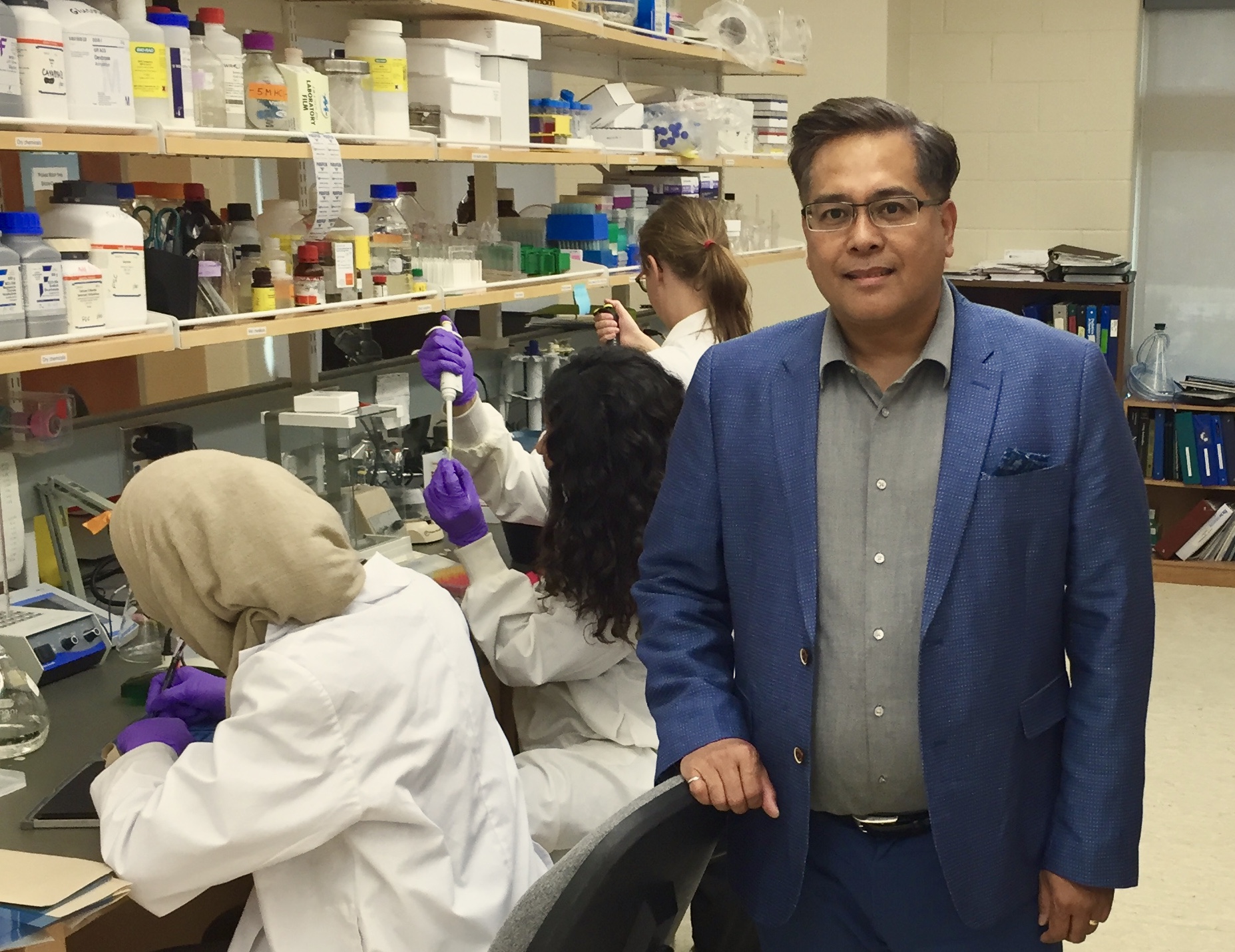
Shooting cancer’s messenger: new USask therapy disrupts communication inside malignant cells
SASKATOON – A new breast-cancer treatment which shoots the messenger within cancer cells and halts the growth of tumours is being developed at the University of Saskatchewan (USask).
By USASK RESEARCH PROFILE AND IMPACTThe USask research team has discovered how to halt the replication of human breast cancer cells, grown in the lab, by interfering with an intracellular messenger crucial to the spread of cancer.
In tests, malignant cells stopped multiplying, appearing to regress to a pre-cancerous state. In early stage animal studies, the research team stopped or shrank tumour growth.
Francisco Cayabyab, leader of USask’s neuroscience research cluster, has received $50,000 from the Saskatchewan Health Research Foundation (SHRF) for the next phase of research which will test the therapeutic effect of his novel treatment on other cancers, including prostate and glioblastoma, an aggressive form of brain cancer.
“Our prevailing results show that this novel anti-cancer therapy can slow down cancer growth in breast cancer, and we are now planning further tests on different types of cancers,” said Cayabyab, an expert in cellular signaling in the College of Medicine.
Breast cancer cells develop when molecular switches in breast tissue become hyperactive, resulting in the uncontrolled cell proliferation.
USask researchers identified STAT1, a molecular switch or messenger inside cells. It regulates the function of a potassium ion channel called HERG, which is used to conduct or propagate electrical messages within and between cells. Cayabyab found that HERG is overexpressed in many types of cancer, and is tethered to the intracellular messenger STAT1 in cancerous breast tissue. He discovered a method of interfering with the way the STAT1 messenger and HERG interact.
Read more on the university's news site.
